George Morris is the most quotable of trainers. Here’s a series of his pearls of wisdom taken from interviews with George over nearly forty years.
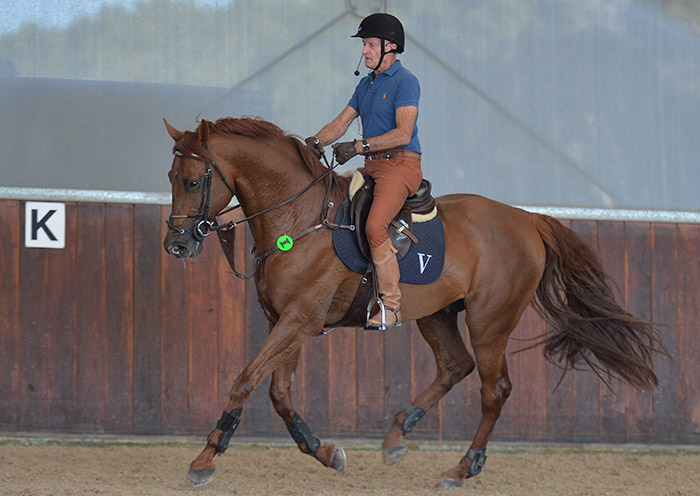
‘Riding is very simple, however, it is not easy…’
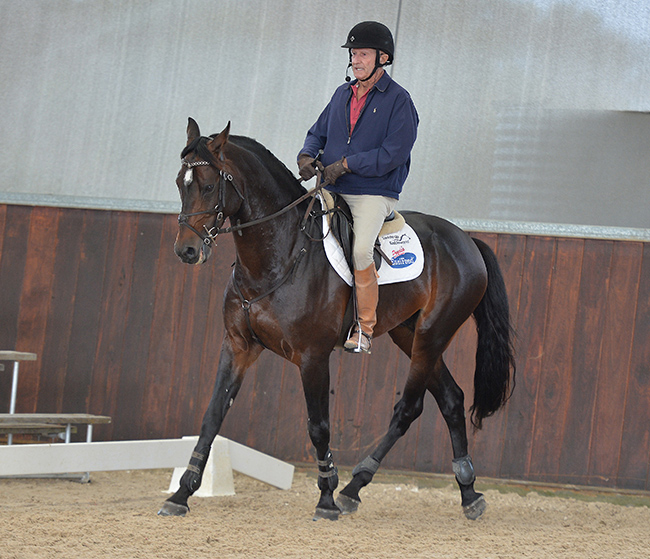
“Legs are so important because of impulsion, which to me is the first lesson you give the horse, not rhythm.”
“My definition of impulsion is does the horse think forward? The second duty of the inside leg is the basis of collection. People think about the top of the horse when they think collection, but it is the inside hind leg that comes under the body shadow of the horse, that starts the back to front collecting of the horse. Nothing, nothing that I teach did I invent. I put things together maybe in an interesting package, but I didn’t invent any of this.” 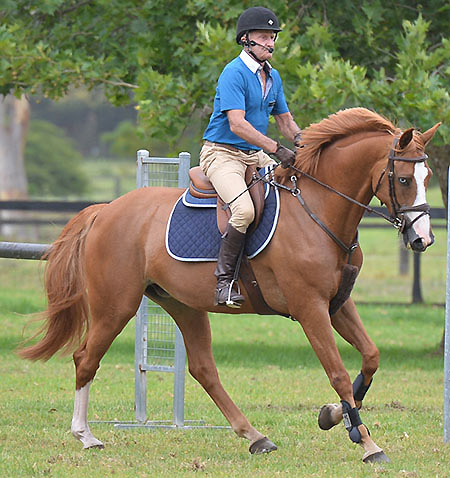
“The inside leg to the outside rein is ancient history. One of my friends is very interested in ballet, and he said to me last year, George, ‘it is opposition in the dance that creates balance’.”
“Inside leg to outside rein, puts the horse in balance – it makes the horse straight, and puts the horse in balance.”
“The neck is attached to the shoulder and is straight. The first two thirds of the neck should be quite stiff. When we are getting the horse’s shoulder light, be careful not to over-bend to the inside – bend them with the inside leg, not the hand.”
“Have the horse rigorously straight in a straight line. What is important in rapid turns is not the bend, but the rapid mobilization of the shoulder. We are now testing impulsion – forward and back, make it progressive, not abrupt.”
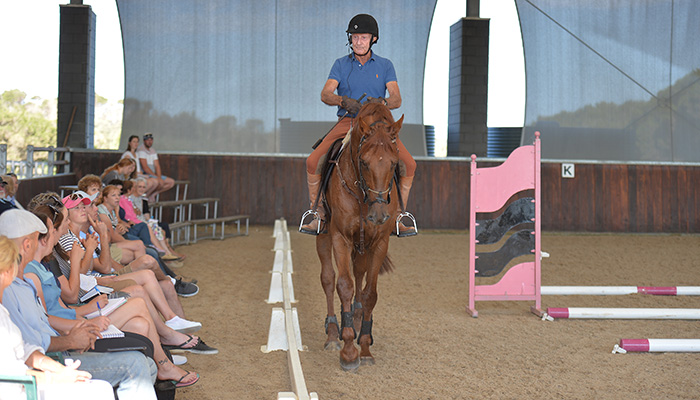
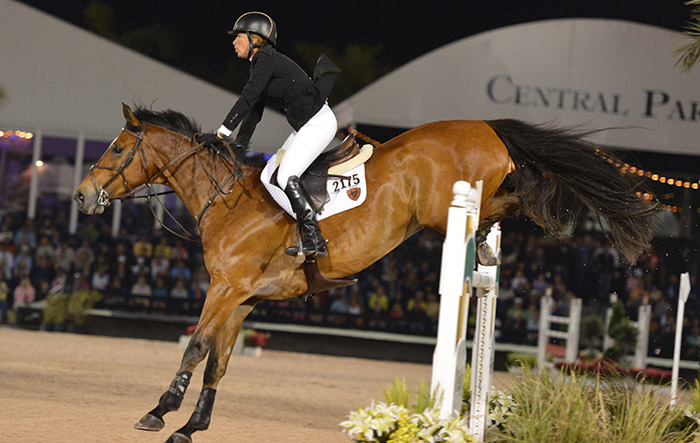
“Don’t sit back after a horse lands, horses hate that, it hollows a horse.”
“You don’t have to sit down for three-point contact, just sink into the saddle. If you sit down you make them quick and hollow. Keep your body well forward, I want you to just squat in the saddle. Every horse will be rounder if you stay forward, stay forward like Beezie Madden, like John Whitaker and Nick Skelton. My system is big on legs and hands, the seat takes care of itself.”
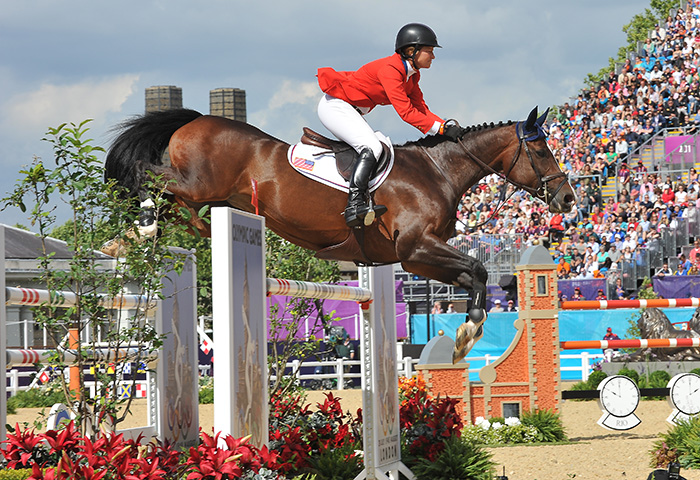
“Replace the word ‘sit’ with the word ‘sink’ into the saddle – don’t sit back. Worry about heels down, not sit down.”
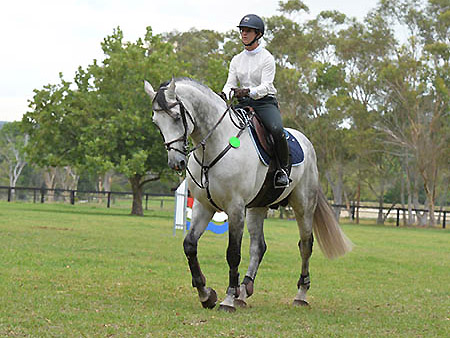
“Straightness is a virtue, if the horse is not straight it doesn’t have to work, it doesn’t have to collect.”
“Make the horse straight with a bend round the inside leg, make the horse straight with shoulder fore.”
“You don’t collect a horse, collection is the result of impulsion, rhythm, straightness and engagement – collection is the result. It is nothing to do with this forced over-flexion.”
“When the horse is dead to your legs, don’t kick and make it deader. Use the whip, use the spur. You have to understand the mechanics of the horse being put to the bit – just one quick attack with both spurs and get the horse’s hind legs. I want the poll up and the jaw soft but not over-flexed. I know that this is the fashion, over-bent, over-flexed horses.”
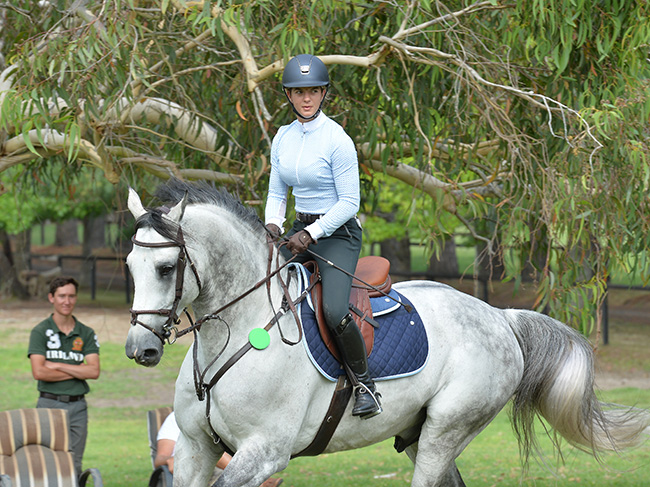
“Bending lines are becoming more popular in the sport because of their difficulty. The indoor German shows are all bending lines, they are good to supple the horse, good for the rider’s precision.
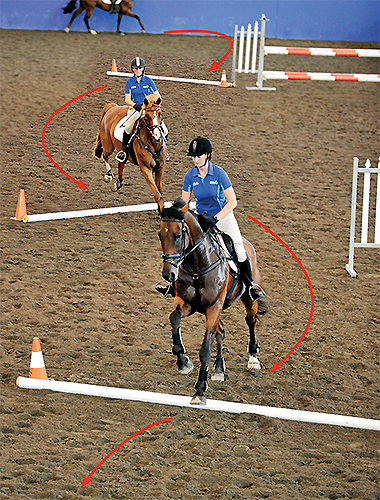
“The poles are just to keep your horses straight – you are so obsessed with neck bending.”
“Sink, stretch, inside leg, outside rein, and stop.”
“That’s a mantra for every downward transition. Every downward transition perfects the half halt. You don’t have to have a driving leg for the downward transition, you need a sustaining leg.”
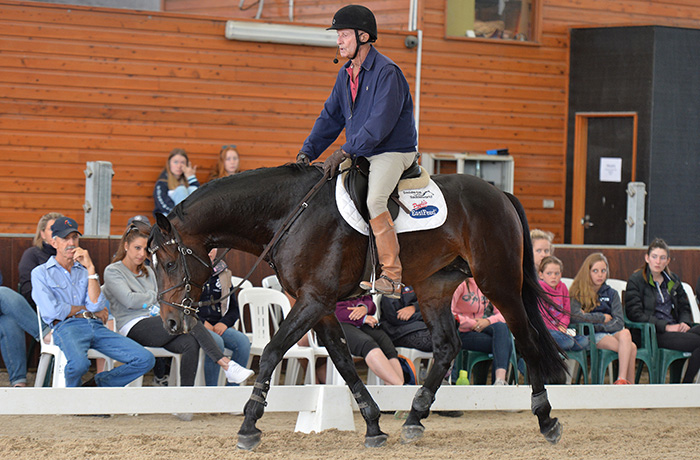
“Long and low at the end. When you lower the neck by engagement progressively, the hind end comes under the horse and then you can ride deep.”
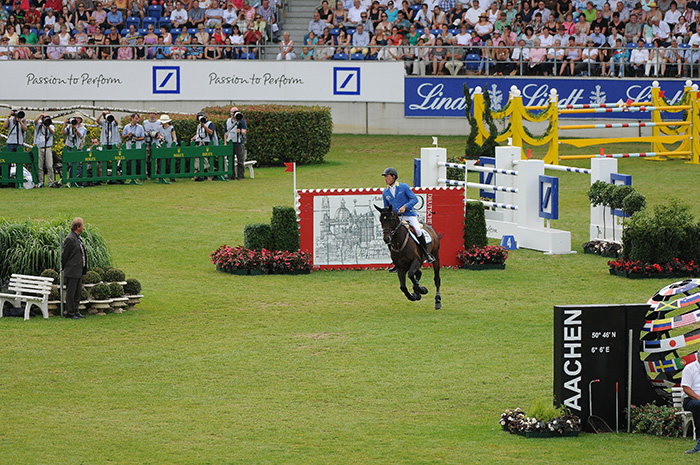
“If you have a good horse, and if your horse is well schooled, and the horse and rider are well prepped, any course should suit them. Riders moan about courses, about how hard the time is to get, but you’ve got to adjust – learn to ride a roll-back, learn to leave out strides.”
Want more wisdom of the Master? Go to: http://www.horsemagazine.com/thm/whos-who/morris-george-h/
Breeding a world class showjumper this season? Check out the top European bloodlines available from International Horse Breeders: www.ihb.com.au
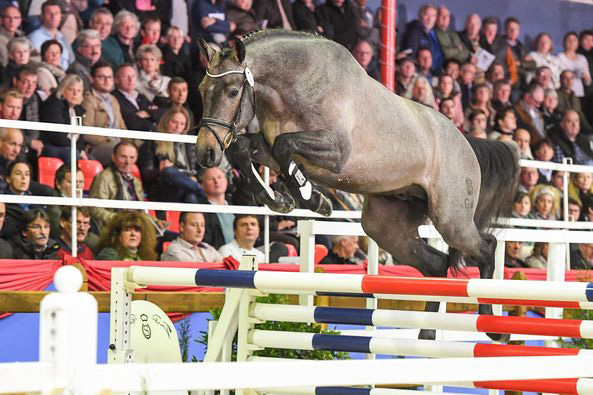
Cavoiro – H


